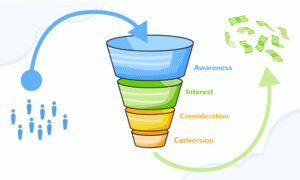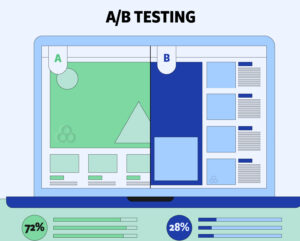
Cart abandonment is the bane of every e-commerce owner’s existence, with shoppers filling carts only to vanish before checkout. To reduce cart abandonment, you need smart funnel tactics that address friction and boost user experience. A well-optimized funnel can transform lost sales into revenue, driving better sales performance for your online store. This guide outlines seven proven strategies to reduce cart abandonment, packed with data-driven insights, real-world examples, and visual marketing techniques to enhance conversion-focused design. Let’s dive into how to reduce cart abandonment with actionable CTA optimization and lead generation strategies to keep customers clicking through.
Why Reducing Cart Abandonment Is Critical
Industry data reveals that 69% of online shoppers abandon their carts, costing e-commerce businesses billions in potential sales. Failing to reduce cart abandonment means hemorrhaging revenue and wasting ad spend. By addressing pain points like trust, complexity, or unexpected costs, you can create a funnel that retains shoppers and boosts conversions. Smart funnel tactics, rooted in user experience, are your key to reduce cart abandonment and achieve better sales performance. Here’s how to do it in seven steps.
1. Streamline the Checkout Process

A lengthy or confusing checkout is a major driver of cart abandonment. To reduce cart abandonment, simplify the process for a seamless user experience.
How to Do It
- Use a Single-Page Checkout: Combine cart review, shipping, and payment into one page.
- Minimize Form Fields: Ask only for essentials like name, email, and address.
- Add Progress Indicators: Show a visual bar to clarify checkout steps.
Example
A clothing retailer switched to a single-page checkout, cutting abandonment by 22% to reduce cart abandonment.
Action Step: Consolidate your checkout into one page and remove one non-essential form field.
2. Be Transparent About Costs
Hidden fees, like shipping or taxes, shock shoppers into abandoning carts. To reduce cart abandonment, display all costs upfront to maintain trust and user experience.
How to Do It
- Show Fees Early: Include shipping and tax estimates on the cart page before checkout.
- Offer Free Shipping Incentives: Set a threshold like “Free shipping over $50” to encourage larger orders.
- Clarify Charges: Use tooltips to explain any additional fees.
Example
A tech store displayed shipping costs on the cart page, dropping abandonment by 17% to reduce cart abandonment.
Action Step: Add shipping and tax details to your cart page and test a free shipping threshold offer.
3. Build Trust with Security Signals
Shoppers won’t complete purchases if they feel unsafe. To reduce cart abandonment, add trust signals to your checkout, reinforcing conversion-focused design.
How to Do It
- Display Security Badges: Place icons like “Secure Payment” near the payment form.
- Show Trust Metrics: Highlight “Trusted by 20,000+ Customers” to boost credibility.
- Link to Policies: Include a clear return policy link for reassurance.
Example
A jewelry brand added a “SSL Secured” badge, reducing abandonment by 14% to reduce cart abandonment.
Action Step: Add one security badge or trust metric near your checkout’s payment section.
For proven tools to reduce cart abandonment, visit HighConvertingFunnels.com for user experience-focused templates.
4. Optimize CTAs for Urgency and Clarity

Weak or generic calls-to-action (CTAs) fail to push shoppers to complete their purchase. To reduce cart abandonment, craft CTAs that drive CTA optimization and action.
How to Do It
- Use Benefit-Driven Text: Replace “Checkout” with “Secure Your Order Now.”
- Leverage Bold Colors: Use contrasting hues like red on white for visual marketing impact.
- Place Strategically: Position CTAs at the top and bottom of the checkout page.
Example
A pet store changed their CTA to “Get Your Pet’s Favorites Today,” cutting abandonment by 12% to reduce cart abandonment.
Action Step: Update your checkout CTA with urgent, benefit-focused text and test a contrasting color.
5. Offer Guest Checkout Options
Forcing account creation adds friction, driving shoppers away. To reduce cart abandonment, provide a guest checkout option to streamline user experience.
How to Do It
- Enable Guest Checkout: Allow purchases without requiring an account.
- Promote Accounts Post-Purchase: Suggest account creation after checkout with perks like order tracking.
- Simplify Login: Offer social login options for faster access if accounts are used.
Example
A home decor store added guest checkout, reducing abandonment by 19% to reduce cart abandonment.
Action Step: Implement guest checkout and encourage account creation after the purchase is complete.
6. Make Checkout Mobile-Friendly
With over half of e-commerce traffic from mobile devices, a non-responsive checkout spikes abandonment. To reduce cart abandonment, prioritize mobile user experience.
How to Do It
- Use Responsive Design: Ensure forms and buttons adapt to smaller screens.
- Enlarge Tap Targets: Make buttons at least 44×44 pixels for easy tapping.
- Test Across Devices: Preview checkout on multiple smartphones to spot issues.
Example
A cosmetics brand enlarged mobile checkout buttons, dropping abandonment by 15% to reduce cart abandonment.
Action Step: Test your checkout on two mobile devices and adjust one button or field for better usability.
7. Recover Lost Carts with Email Sequences

Abandoned carts aren’t always lost. To reduce cart abandonment, use email sequences to re-engage shoppers, leveraging lead generation strategies.
How to Do It
- Send a Reminder Email: Email within 1 hour, e.g., “Your Cart Is Waiting!”
- Offer an Incentive: Provide a discount or free shipping in the second email.
- Add Urgency: Use phrases like “Items Selling Fast!” in the third email for emotional impact.
Example
A sports gear retailer’s three-email sequence recovered 16% of abandoned carts to reduce cart abandonment.
Action Step: Create a three-email cart recovery sequence with a reminder, incentive, and urgency trigger.
For advanced conversion-focused design strategies to reduce cart abandonment, explore HighConvertingFunnels.com.
Measuring Success
To ensure your efforts to reduce cart abandonment pay off, track these metrics:
- Cart Abandonment Rate: Aim to lower below 60%.
- Checkout Conversion Rate: Target 50–70% completion rates.
- Click-Through Rate: Seek 3–5% for CTAs in visual marketing.
- Email Recovery Rate: Aim for 10–20% of abandoned carts recovered.
Use analytics platforms to monitor performance. Industry data shows optimized funnels can cut abandonment by 25% with consistent tweaks. If metrics falter, refine one tactic, like CTA text, and A/B test.
Why Reducing Cart Abandonment Is Essential
In a competitive e-commerce market, every abandoned cart is a missed opportunity. Shoppers expect fast, transparent, and secure checkouts, and failing to reduce cart abandonment hands sales to rivals. A single percentage point reduction can add thousands to your revenue. By focusing on user experience and CTA optimization, you create funnels that retain customers and drive better sales performance.
Common Pitfalls to Avoid
- Surprise Costs: Disclose fees early to prevent sales funnel leaks.
- Complex Forms: Keep fields minimal for smoother landing page optimization.
- Poor Mobile Design: Ensure mobile compatibility to retain shoppers.
- Weak Recovery Efforts: Don’t skip email sequences for lead nurturing.
Getting Started
Ready to reduce cart abandonment? Follow these steps:
- Audit Your Checkout: Analyze abandonment rates and user behavior.
- Implement One Tactic: Start with guest checkout or cost transparency.
- Test and Refine: A/B test one element for visual marketing impact.
- Scale Success: Apply winning strategies across your funnel.
Real-World Impact
A furniture retailer streamlined their checkout, added security badges, and launched recovery emails, slashing abandonment from 70% to 50%, boosting monthly revenue significantly. Strategic tweaks to reduce cart abandonment deliver big wins.
Conclusion
To reduce cart abandonment, streamline checkout, be transparent about costs, build trust, optimize CTAs, offer guest checkout, ensure mobile-friendliness, and recover lost carts with emails. These seven funnel tactics, rooted in user experience and conversion-focused design, turn abandoned carts into completed sales. Start with one strategy, track results, and scale what works. With resources from HighConvertingFunnels.com, you can master tactics to reduce cart abandonment for better sales performance. Act now to keep your carts full and your customers happy.



